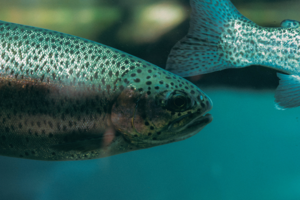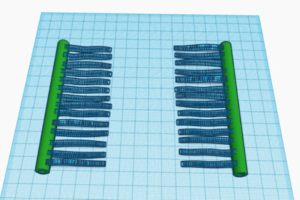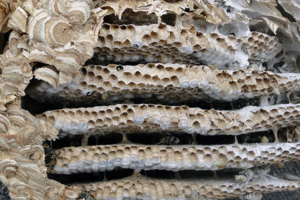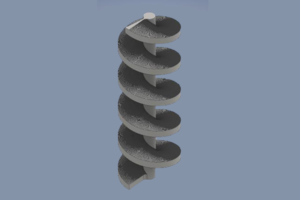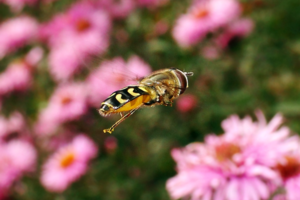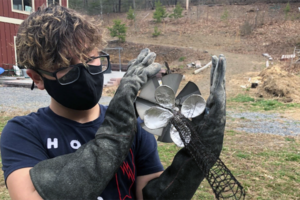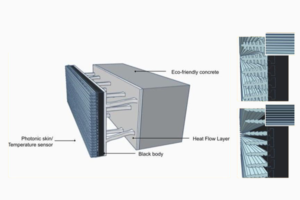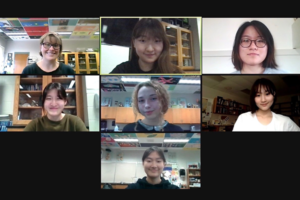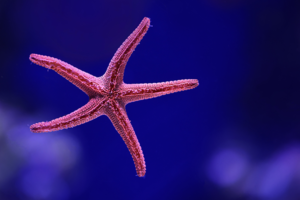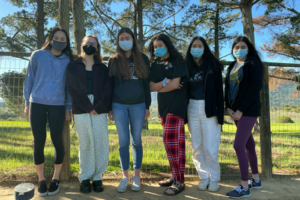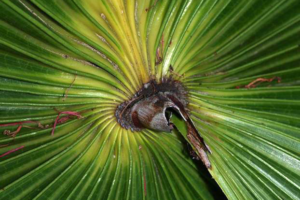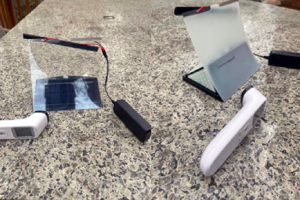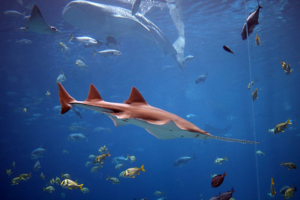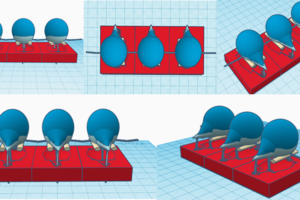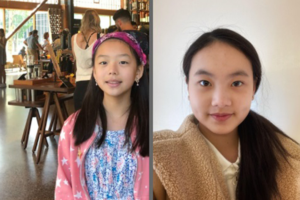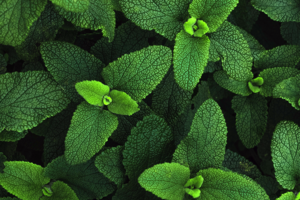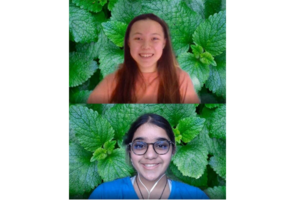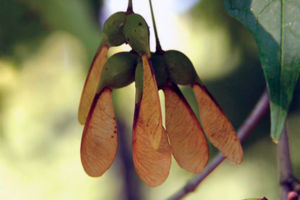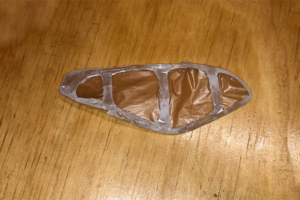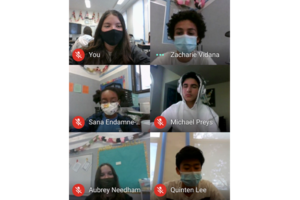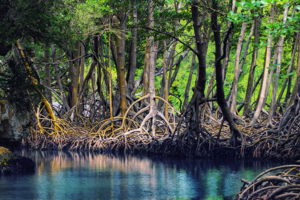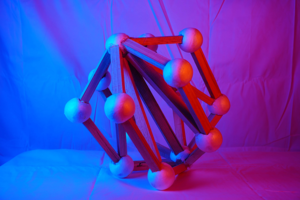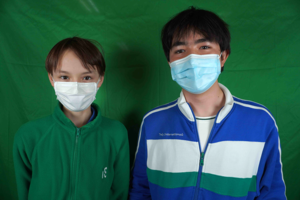Biomimicry Institute Reveals Winners of 2021 Youth Design Challenge
Winners build interdisciplinary solutions to address deforestation, clean energy, climate change and more
Missoula, MT, May 25, 2021 — Today the Biomimicry Institute, a nonprofit organization that empowers people to create nature-inspired solutions for pressing design problems, announced the winners of the 2021 Youth Design Challenge. The Youth Design Challenge, now in its fourth year, serves as a bridge from core concepts to advanced project-focused STEM learning for middle and high school students across the world. The Biomimicry Institute has bestowed awards across five categories, all of which speak to the inherent strengths of the different solutions.
The Youth Design Challenge introduces and immerses students in biomimicry—the practice of looking to nature for inspiration to solve design problems in a regenerative way. Students, along with teachers and coaches, engage in design-focused and project-based learning to solve a problem they’ve identified. Solutions are generated through an iterative design process as students engage with nature from a new perspective.
“This year’s ten winners are truly representative of the myriad of solutions that can be addressed through nature-inspired design: shelters to protect vulnerable communities from flooding, new materials to lessen energy consumption, and new tools for carbon sequestration,” said Rosanna Ayers, Director of Youth Education at the Biomimicry Institute. “We are proud of all of the students who participated in the Youth Design Challenge, and we are grateful for the educators who worked hard to apply this new perspective to advanced STEM learning.”
In a world with increasingly complex problems and systems, biomimicry provides a lens for tomorrow’s leaders to create sustainable solutions for the benefit of people and the planet. By transcending the walls of the classroom, students gain hands-on experience in STEM-focused learning, and educators have an interdisciplinary platform to connect subjects to one another, further inspiring students’ curiosity and ingenuity for years to come. All of the submitted projects addressed a wide range of problems, leveraged unique nature-inspired viewpoints, and showed the passion and commitment of young students to embrace the planet they will inherit.
The Youth Design Challenge is open to middle- and high school-age students across the globe. To learn more about the Youth Design Challenge, and how to get involved, visit biomimicry.org/youthdesignchallenge.
The winning projects of the Youth Design Challenge are awarded among five categories:
- Naturalist Award: For comprehensive research into biological models, thorough explanations of their natural history and strategies, and selection of appropriate organism models to inform the design.
- Changemaker Award: For an innovative design proposal that could potentially move forward in future research and development and/or would have a significant impact if implemented.
- Design Cycle Award: For perseverance in the iterative design cycle including exploration of multiple design ideas, using creative techniques to test potential solutions, and/or getting feedback from diverse experts and interested community members to inform design revisions.
- Problem Definition Award: For systems thinking, thoroughness, and creativity in researching, identifying, and defining a problem to solve.
- Storyteller Award: For an engaging presentation of the required application materials that creatively and accurately captures the team’s innovation process and learning journey.
There is no hierarchy to the awards, all of these teams are winners! To get to the award panel, teams had to perform well across all categories in a preliminary review process. In many cases it was difficult for the judges to decide which award each team would receive, because they were all strong in multiple areas.
In addition to being recognized as winners, each team also received an award of $500 to be donated to a charity of their choosing. The teams chose charities focused on conservation or sustainability, further showing these students’ incredible commitment to the planet and environment.
Without further ado, this year’s 2021 Biomimicry Youth Design Challenge winners are…
HIGH SCHOOL CATEGORY
Naturalist Award: The Current Cleanser
A contaminant filtration system inspired by fish gills.
Hillsborough, New Jersey, USA
- Biological Inspiration
- Product
- Team
This team chose to address water pollution caused by agricultural runoff as a result of increasingly intense storms. The Current Cleanser is a conceptual design for a system that extracts common pollutants from flowing water using the principle of countercurrent multiplication observed in numerous organisms including fish gills and the human kidney. The system works by circulating water through a tendril-like tubing system that maintains a continuous concentration gradient so pollutants migrate into the tube. View a video description of the innovation here.
Selected charity: World Resources Institute
“This team did an excellent job formulating “How does nature?” question at the beginning of their research. They looked at a number of organisms in detail and discovered a powerful common pattern—countercurrent multiplication—to emulate. In addition they exhibited admirable dedication to solving the problem without harmful side effects, costliness, etc.” – Award Panel
Changemaker Award: Tidal Twister
Inspired by mangroves, spiral horned antelope, and mud dauber wasps, this device addresses coastline erosion by reducing wave turbulence and encourages the return of oysters and eelgrass.
Parkton, Maryland, USA
- Biological Inspiration
- Product
- Team
The Tidal Twister seeks to address coastline erosion on the Chesapeake Bay by reducing wave turbulence and encouraging the return of oysters and eelgrass. After learning about how the bay is threatened by climate change, this team set out to create a device capable of dissipating increased wave action while also appealing to creatures at different aquatic depths. Inspired by mangroves, spiral horned antelope, and mud dauber wasps, the team proposed a 3D printed cement spiral anchored to the coastal sea bed where it reduces wave energy and creates habitat for beneficial aquatic organisms found at varied depths. View a video description of the innovation here.
Selected charity: Chesapeake Bay Foundation
“A very exciting, innovative, multiple-benefits design solution to both reduce harmful impacts to shorelines thru erosion while also positively impacting eelgrass beds. This team should pursue next steps to test the idea in their community!” – Award Panel
Design Cycle Award: Black Carbon Keeper
A device that captures black carbon particulate emissions from wood stoves, inspired by bees, sea cucumbers, and fiddler crabs.
Berkeley Springs, West Virginia, USA
- Biological Inspiration
- Product
- Team
The Black Carbon Keeper is a design concept to capture black carbon emissions from wood stoves and sequester it through mycelium remediation. Wood burning stoves are a common source of home heating in West Virginia, where this team resides, as well as around the world. But wood stoves release black carbon particulates (soot) into the air, and this becomes a climate concern when it traps heat in the atmosphere or settles onto snow and ice, reducing natural abedo. In response to the problem, this team prototyped a device that fits into existing stove pipes and captures black carbon particles via a combination of electrostatic attraction, inspired by bees, hair-like mechanisms inspired by fiddler crab setae, and a sticky substance inspired by sea cucumbers. View the video description of the innovation here.
Selected charity: Wind Dance Farm & Earth Education Center
“This team’s prototyping efforts moved beyond many in the number of attempts and modifications made. That is a requisite element for successful entrepreneurs. Bravo!” – Margo Farnsworth, Award Panelist
Problem Definition Award: MorphoBrick
A building material, inspired by the Morpho butterfly, that can absorb or reflect heat depending on the temperature.
Fryeburg, Maine, USA
- Biological Inspiration
- Product
- Team
The MorphoBrick is a building material concept, inspired by the Morpho butterfly, that changes its color and reflectivity in response to temperature. The team recognized that heating and cooling systems around the world are responsible for significant amounts of greenhouse gas emissions. Their design allows buildings to regulate their temperatures efficiently by either absorbing or reflecting solar radiation, using a strategy inspired by the nanostructures found on Morpho butterfly wings, which allows both reflection and absorption of light waves. View the video description of the innovation here.
Selected charity: World Resources Institute
“This team did a phenomenal job researching and explaining the problem they set out to solve. They also clearly grasped the process of biomimicry and how to translate that into a design” – Puja Batra, Award Panelist
Storyteller Award: BioBRICKery
A carbon-sequestering mud brick inspired by calcium carbonate-producing marine organisms in addition to bees and arctic fish.
Belmont, California, USA
- Biological Inspiration
- Product
- Team
The BioBRICKery team sought to address climate-related housing displacement while also addressing carbon dioxide emissions from the building industry as a root cause of the issue. They created and tested a prototype for a carbon-sequestering mud brick that is inspired by calcium carbonate-producing marine organisms, the use of hexagons for strength found in multiple organisms, and a freeze-resistant arctic fish. They envision their design as an affordable and sustainable building option for those who are displaced or in difficult situations due to climate emergencies. View the video description of the innovation here.
Selected charity: Save the Bay
“This team described their process well, did tests and comparisons with alternative construction bricks, came up with a solution for an improvement, talked to community experts, and presented all of it beautifully with detail, photos and illustrations. In addition the video was compelling and had some fun humor in it.” – Award Panel
MIDDLE SCHOOL CATEGORY
Naturalist Award: Adapto-Panel
A solar panel designed to maintain efficiency even at high temperatures, inspired by leaves and the Oriental hornet.
Johns Greek, Georgia, USA
- Biological Inspiration
- Product
- Team
Solar panels don’t work well when they overheat. The Adapto-Panel is a concept for a solar panel designed to maintain efficiency by reflecting excess sunlight when it gets too hot. It was inspired by the ways different plants adapt to high and low light conditions by absorbing or reflecting more light. The Adapto-Panel would regulate how much light enters the panel using a switchable smart glass and temperature sensor. Additional design features include textures inspired by the Oriental hornet to increase light capture, and a curved shape to increase space efficiency. View the video description of the innovation here.
Selected charity: Center for Biological Diversity
“This team really invested in trying to understand how nature deals with light and temperature. They researched multiple organisms, and recognized some patterns, before they chose the ones that offered the most useful biological strategy.” – Award Panel
Changemaker Award: Teardrop Residence
This amphibious shelter protects residents living within flood prone areas and was inspired by swordfishes, sea otters, box-patterned geckos, and beavers.
Palo Alto, California, USA
- Biological Inspiration
- Product
- Team
This team was motivated to protect people living in flood prone areas, such as the island of Taiwan, which will be increasingly impacted by climate change. The Teardrop Residence is an amphibious shelter that rests on the ground under normal conditions but can float whenever a flood occurs. The pointed shape of the home mimics the hydrodynamic features of the swordfish to resist damage from flood surges. Coatings inspired by box-patterned geckos protect it from water, and tethers inspired by sea otters keep the shelters from floating away. Beaver-inspired insulation would further help regulate temperature in the structure. View the video description of the innovation here.
Selected charity: Conservation International
“For me, a changemaker represents not just the design solution but the people behind making it a reality. This project showcased excellence with thorough process, creative ideation, and intentional rigor. I have no doubt the team behind Teardrop Residence will go on to manifest brighter solutions for people+planet and I look forward to supporting them on that journey ahead.” – Leon Wang, Award Panelist
Design Cycle Award: Frost Safe Wind Turbine
Inspired by mint and lotus leaves, this solution prevents drag-inducing frost from building up on wind turbine blades, thereby improving their efficiency and reliability in cold climates.
Vancouver, British Columbia, Canada
- Biological Inspiration
- Product
- Team
In cold weather, wind turbine blades can become coated in ice build up, which negatively affects their performance and can even damage the turbine. Inspired by mint and lotus leaves, this team came up with a solution that could prevent drag-inducing frost from building up on wind turbine blades, thereby improving their efficiency and reliability in cold climates, without the use of chemical deicing agents. Frost Safe Wind Turbines is a proposal to retrofit existing turbines by laser-engraving the blades with a pattern that mimics the texture of mint leaves, which resist ice build up. An additional hydrophobic coating, inspired by lotus leaves, would repel water to further inhibit ice and frost formation. View the video description of the innovation here.
“This project is a smart, clever solution that the design team should consider sending to companies manufacturing wind turbines today!” – Daniel Kinzer, Award Panelist
Problem Definition Award: Project RED
A maple seed inspired device that combats deforestation by making it easier to replant trees.
Redwood City, California, USA
- Biological Inspiration
- Product
- Team
This team chose to address the problem of deforestation by designing a method to make it easier to replant trees over large areas. Project RED proposes a maple seed inspired seed-carrier that could be released from airplanes to then float to the ground on wing-like propellers. Made out of a water soluble paper, the device would rapidly biodegrade as the tree seedling begins to grow. View the video description of the innovation here.
Selected charity: World Resources Institute
“This project is focused on addressing deforestation, which is a root cause of climate change and a critical player in solving it. They also demonstrated an understanding of systems thinking when they identified sustainable materials as an important criteria for the design.” – Award Panel
Storyteller Award: Coral Mangrove Dolos
A mangrove and coral reef inspired device to protect coastlines against storm surges.
Tokyo, Japan
- Biological Inspiration
- Product
- Team
A dolos is a massive concrete block with a complex geometric shape that is piled in large numbers for coastline protection against the erosive force of waves. The Coral Mangrove Dolos is a concept for a new type of dolos that provides similar protection, without the environmental footprint of concrete, while also helping to rebuild coral reefs. The team’s design has a lattice-like structure that integrates features inspired by both mangrove roots and coral reefs. These features help to reduce wave energy and erosion, and provide space in which natural coral can become established, increasing the strength of the overall installation. View the video description of the innovation here.
Selected charity: Project Drawdown
“The compelling story this team told of the impact of tidal surges on the communities they hit made the design strategy more urgent and the effects of climate change more REAL!” – Nora Flood, Award Panelist
####
About the Biomimicry Institute
The Biomimicry Institute is a 501(c)(3) not-for-profit organization founded in 2006 that empowers people to seek nature-inspired solutions for a healthy planet. To advance the solution process, the Institute offers AskNature.org, a free online tool that contains strategies found in nature and examples of ways they are used in design. It also hosts a Biomimicry Global Design Challenge and Youth Design Challenge to support project-based education; a Biomimicry Launchpad startup accelerator program; a Ray of Hope Prize® for developing companies to bring designs to market; and a Biomimicry Global Network that connects innovators across the world.
Media Contact
Lex Amore, Director of Partnerships and Advocacy
[email protected]
415-800-1407
We will use the information to be in touch with you via email. You can change your mind at any time by clicking the unsubscribe link in the footer of any message you receive from us. Learn more about our privacy practices here.
Support the Next Generation
of Nature-Inspired Innovators
Imagine a world where everything we make is inspired by the natural world. By supporting the Biomimicry Institute you:
- Help bring biomimicry education to more students and educators
- Accelerate the growth of more nature-inspired startups and entrepreneurs
- Increase the number of biological strategies and resources on AskNature.org and across our entire organization.

